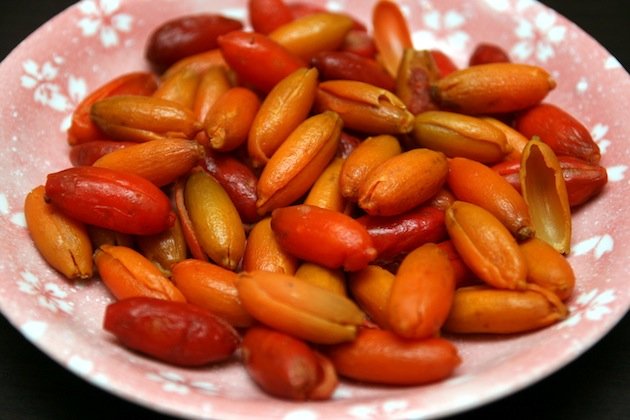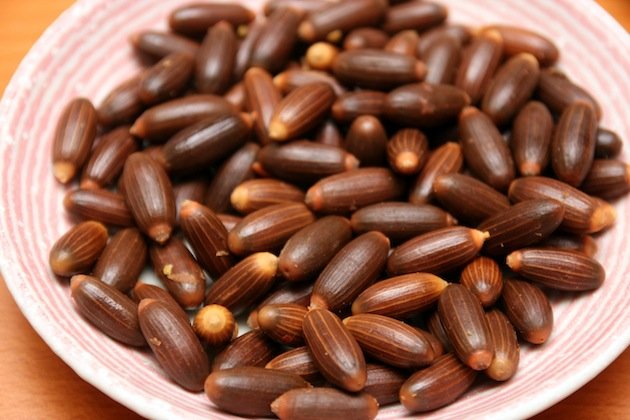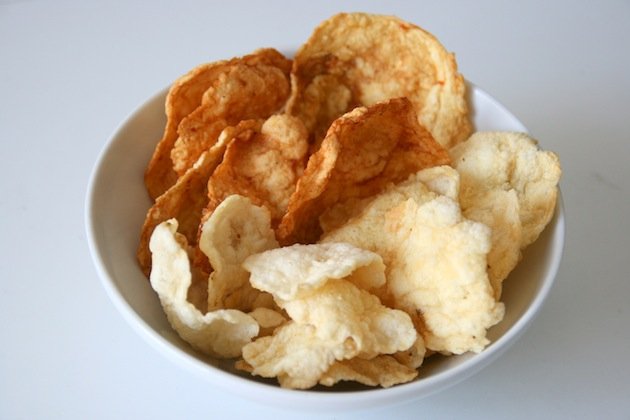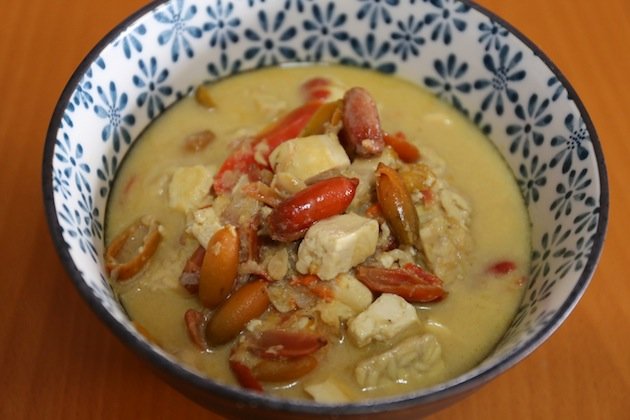
The Belinjo Nut
By Catherine Ling - Friday, Jul 26, 2013
Barack Obama once praised the emping for being “enak” or delicious when he visited Indonesia in 2010. Many of us do indeed love the slightly bitter yet strangely addictive emping crackers, often served with soto, lontong and sometimes mee rebus at Malay stalls. The crackers are also widely available at local supermarkets and wet markets, but how often have you seen the belinjo or melinjo nut from which it is made?
The nut is actually the oval-shaped seed of the gnemon tree native to Indonesia. It’s enveloped by a fleshy skin that is red when ripe and green when immature. Remove that skin and you’ll see another layer of dark brown skin that’s thinner, more brittle and striped, protecting the cream-coloured nut within. These nuts can actually be eaten steamed too.

Making emping cracker is a laborious and manual procedure. These brownish seeds are dry-fried so that the skin comes off. Each nut is then hand-pounded using a metal disc into flat crackers – generally one nut is one cracker, or smaller ones can be combined into one larger one. These are then sun dried to be ready for deep-frying or storage.
Most emping after deep-frying is simply dusted with salt to bring out its natural flavour. Some are given sweet and salty seasoning, or coated with caramelised sugar and chili spices. They are extremely popular as a table snack with sambal belachan, or served atop other dishes like soto and Malay style fried rice – all for that coveted textural crunch.

The outer reddish skin is not just discarded. Like the flowers and leaves of the tree, these are frequently used in cooking. The belinjo skin can be used in stews and soups. They can also be used for dishes like Sayur Asem (a sour vegetable soup), Sambal Goreng (a spicy stir-fry) or coconut curry.

So the belinjo nut is extremely versatile. Most of us know it best for the emping crackers that are so lovingly handmade into. But take a visit to some local markets (especially Geylang Serai) and you will see raw belinjo nuts, leaves and flowers being sold. The Malay and Indonesian population here who know how to make full use of these will turn them into interesting dishes.



